Ask the average business owner in 2024 what keeps them up at night, and you’ll probably get two answers: making more money and how to find good employees.
The latter has become especially challenging these days. In January 2024, for example, the unemployment rate in the US sat at 3.7%, and the OECD unemployment rate was stable at 4.8%. While that’s great news for the global economy, the top employees you’re looking for are likely already working somewhere else.
So, where and how do you find great employees? We’ve asked our experts and in-house hiring team for tips and unique ways to find employees to bring you this list full of 15 ideas for finding employees in a candidate-driven job market.
TL;DR — Key Takeaways
The best place to find employees is…it depends. From social media to employee referrals, it depends on the role you’re hiring for, your hiring budget, whether you’re hiring hourly workers or salaried employees, how quickly you need to fill, and many other factors.
There are many tips on how to find your new team members, but most importantly: choose the right social media channels and work to boost the visibility of your job ads.
If you can’t find someone immediately, try hiring freelancers or people with transferrable skills. Work on your employer brand, and as you do so, build a candidate database. You might also consider building a referral program to get your current employees to help find employees for you.
Use paid ads to maximize your organic efforts and focus on skills-based hiring instead of making decisions based on your gut feeling. While skills-based software won’t help you source candidates, it can ensure you’re hiring great ones.

The best places to find great employees in 2024
Woah, woah, woah. Let’s take a step back here. Instead of thinking about the best places to find a great employee, think about ways to attract them to your job posting and apply for the job.
However, if you’ve reached this page then you’re likely still interested in the best place to find a great new employee. And if that’s all you wanna hear about, then…social media sites are a great place to start.
According to research, in two of the most active generations in the workplace now, millennials and Gen Z, 48% of people applied for job openings they found on social media.
This means that more “traditional” ways to find employees, like job fairs, might not be the best place to find potential candidates as only 15% of job seekers attend them to find new jobs. The same research suggests that 73% of millennials used social media to find their last job, which aligns with similar statistics from the previous study.
The ideal place to find potential candidates will differ based on the size of your company, the position you’re filling, how quickly you need to fill it, and other aspects. However, these are some great places to start.
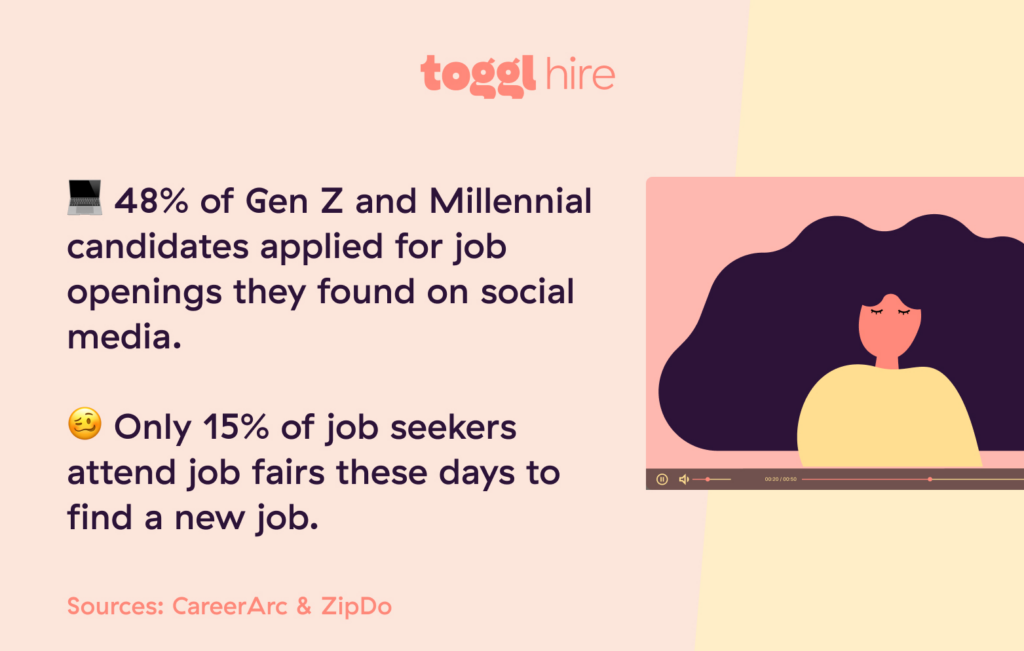
Job postings on job boards
Job postings (otherwise known as your standard job ad) are a great way to find employees online, as countless potential applicants visit the most popular job boards every day—think Indeed, FlexJobs, LinkedIn, etc. Don’t just post on all the top job boards, though. Choose the ones that are relevant to your industry and niche (i.e. the ones quality candidates interested in your role will actually visit).
Free job boards
Free job boards can expose your company and brand to a large pool of potential candidates. Bear in mind, though, that these platforms can produce many unqualified candidates, especially if you hire remote employees. This can quickly overwhelm your recruitment process if you’re not careful.
Social media
Aside from allowing you to post organically to your business pages or company channels, social media platforms allow small businesses (and larger companies) to attract candidates with highly targeted job ads. Make your recruiting process easier and cheaper by setting the right targeting criteria for your prospective employees.

Employee referrals
Referral programs motivate your current employees to find their new coworkers by giving them an incentive — an employee referral bonus. This is a cost-effective way of finding employees who can be an amazing fit for your team, as they’re already vetted by other workers you know and trust.
University job fairs
The highest quality candidates may not even be in the market yet. Career centers and university job fairs at local colleges are great places to find employees ready to prove themselves. Many times, newer talent straight out of college can outperform seemingly quality applicants with more experience.
Internal hires
Instead of trying to find employees online through free job boards or similar sources, promote from within first. However, if you go this route, do it right. Create a succession plan for promoting top performers and ensure you have a plan in place to train whoever fills their previous role.
Networking events
Networking events such as a career fair can help you interact with people in person and grow your professional network. What you can’t explain through your careers page or job opening, your hiring manager can in person.
15 tips for how to find great employees
If traditional methods aren’t working and you need help finding qualified candidates, it’s time to start thinking out of the box. Try these creative ways to find employees to attract the right candidates more quickly and perhaps even save money in the process.
1. Choose the right social media platforms to find job seekers
If you want to find employees online, you’ll likely want to use social media in some way, shape, or form, but don’t just start mass posting on every platform you can think of. Choose the social media platform based on where your ideal candidates are the most likely to spend time.
For example, if you want to find employees for a content creator role for a B2C brand, TikTok might work well. On the other hand, if you need a new VP of Marketing for a B2B SaaS brand, LinkedIn would be a better bet.
2. Maximize your job postings visibility
Just creating an ad on popular online job boards isn’t enough. There are already countless businesses doing the exact same thing. To stand out in front of the right employees, you’ll want to learn how to maximize the visibility of your job posts.
Here are some starting points:
Use the right job title to optimize your job ad for SEO (e.g. marketing manager instead of marketing management rockstar, which doesn’t tell the candidate what they’d actually be doing)
Write a detailed job post and job description that tells candidates exactly what’s expected of them and how they’d be contributing to the company’s success in their day-to-day tasks
Add all the necessary details job seekers find valuable (remote, hybrid, or in-office, seniority level, location, salary, etc.)
If you have the budget for it, pay for promoted job posts on top job sites to stand out from the competition
You can use one or all of these tactics to get more attention from job seekers on job boards, which should also help you land more qualified candidates.
3. Consider hiring freelancers
Can’t find a full-time employee? Try hiring freelancers instead. There are many different places you can look, including:
Specialized freelance job boards
Personal recommendations
Platforms like Upwork, Fiverr, Jooble, or Freelancer

Especially if you’re unsure whether you really need to fill a position long-term or not, freelancers can be a great temporary fix and still add a lot of value to your team.
You can hire them on a project basis to come and solve a specific problem. If they prove to be a valuable addition to your team, you have two options: offer them a full-time role or invest the time and resources needed to advertise for a full-time opening.
4. Focus on qualified candidates with transferrable skills
There are countless job seekers out there, and you may not be able to get a 100% match for every role. Instead, try to find employees with transferrable skills.
For example, if someone previously worked as a social media manager in EdTech, they could be a great candidate for an SMM position for legal consultation services.
Don’t try to tick all the boxes or judge someone based on a past job title. Instead, leave some room for candidates from adjacent but related industries. If they have the right (or similar) skillset and the will to succeed in their role, you can hire employees with different backgrounds with confidence.
5. Improve your employer brand
61% of employees would take a new job with a company that has a better employer brand. This means that having stellar employer branding can be the differentiating factor that helps you find employees more easily.
Easier said than done, right? Here are just a few ways to improve your employer brand without too much work:
Have a transparent job application and recruitment process
Disclose the salary in every job post
Highlight the benefits that go beyond the salary (e.g. maternity and paternity leave, mental wellness days)
Explain what work-life balance means for you as an employer
Promote your best employees and how they contribute to your business
All of this is virtually free and can make job seekers decide to apply for your jobs over your top competitors. If you’re still unsure how to build your employer brand as part of finding employees, here’s an overview of what makes up your employer brand.
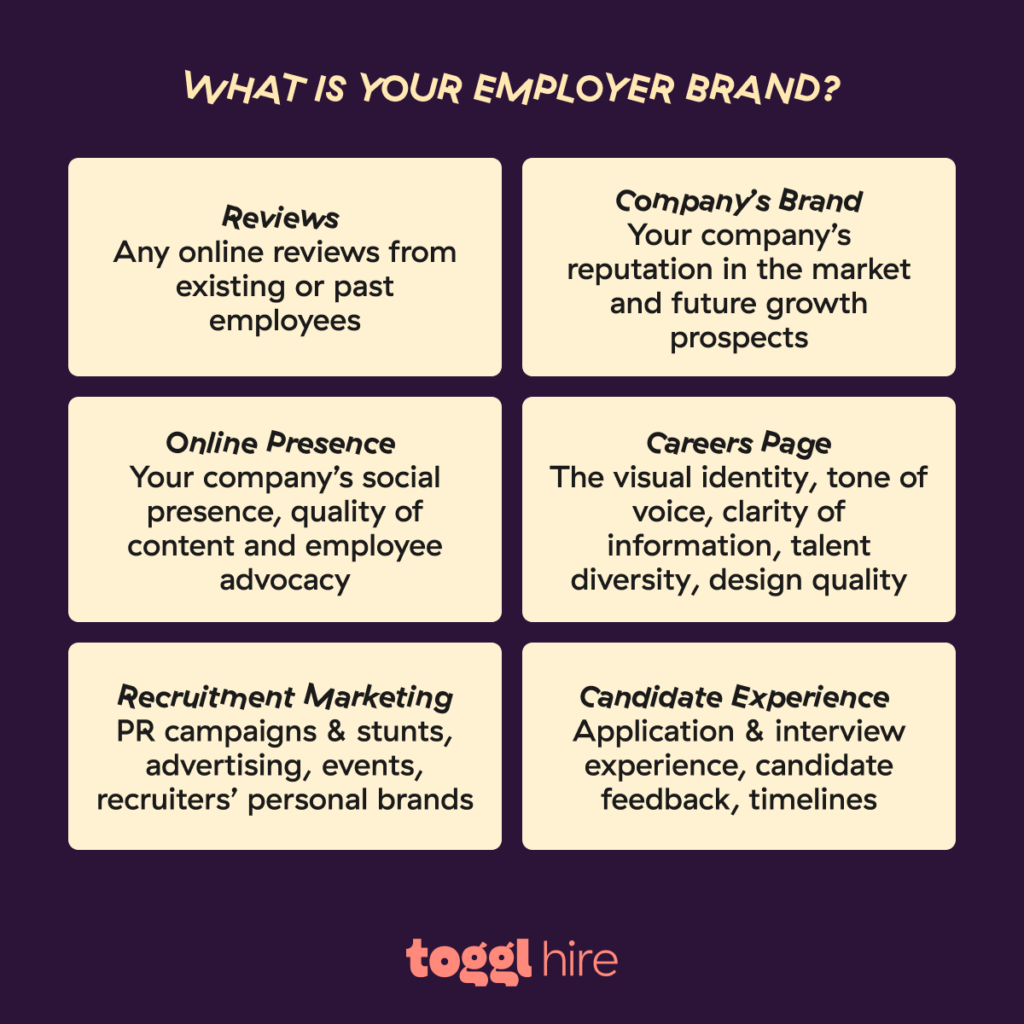
6. Build a candidate database
When you need to hire great people fast, you don’t have time for online job boards and lengthy interview rounds. In this case, what you need to snag top talent is a great candidate database.
A candidate database is a list of the very best job applicants from previous job listings you’ve posted. When you need new people (e.g. contractors, hourly employees, or even someone to fill a new leadership position), tap into this database of potential candidates.
7. Attend university job fairs
Experience doesn’t always mean that someone will perform well on the job. In fact, what university students don’t have in experience, they often make up with soft and transferrable skills, as well as grit.
Plus, attending university job fairs lets you engage with students in person. You can grab them before they even become job seekers and steal the best talent from the market ahead of time.
8. Start an employee referral program
According to Jobvite research, companies with employee referral programs have a shorter time to fill and a better employee retention rate. Many times, hiring referrals is also cheaper compared to job posting sites or running ads on social media platforms.
That’s because when an employee refers someone for a job at your company…
They already know the company culture and values, and they’re recommending someone who is a fit right off the bat
They have an incentive for giving great recommendations (employee referral bonus)
They recommend people they would love to work with
They have their own and the company’s best interests in mind
In short, you have nothing to lose and much to gain by implementing an employee referral program to find potential employees.
9. Use LinkedIn hashtag searches
LinkedIn hashtags have been around since 2017, and most content creators use them for posts on this platform. However, hiring managers and recruiters can also use them to find employees.
Simply search for a hashtag that is relevant to your industry and niche, e.g. #productmarketing, and find the most popular posts under it. Find the top creators in this category and reach out to them to see if they’re looking for a job.
10. Craft very specific job descriptions
The average person applies to 21 to 80 job openings before getting an offer. Unfortunately, many of those job openings will have the same templated job descriptions, and after a while, they get tired of reading the same thing over and over again.
To stand out as an employer in front of potential candidates, create a job description that is interesting, useful and accurately depicts what they would do if they get hired.
Here are some ideas to get started:
Be transparent about the salary (include a range if you don’t have a set salary)
Walk the applicant through a typical day on the job
Explain who they would work and collaborate with daily
Be open about the challenges of the job, not just the upsides
Describe the tools and processes they would use if they were hired
Starting off with a template for job openings is fine. However, use templates merely as just that — starting points. Prove you’re not like the others by having a unique job description.
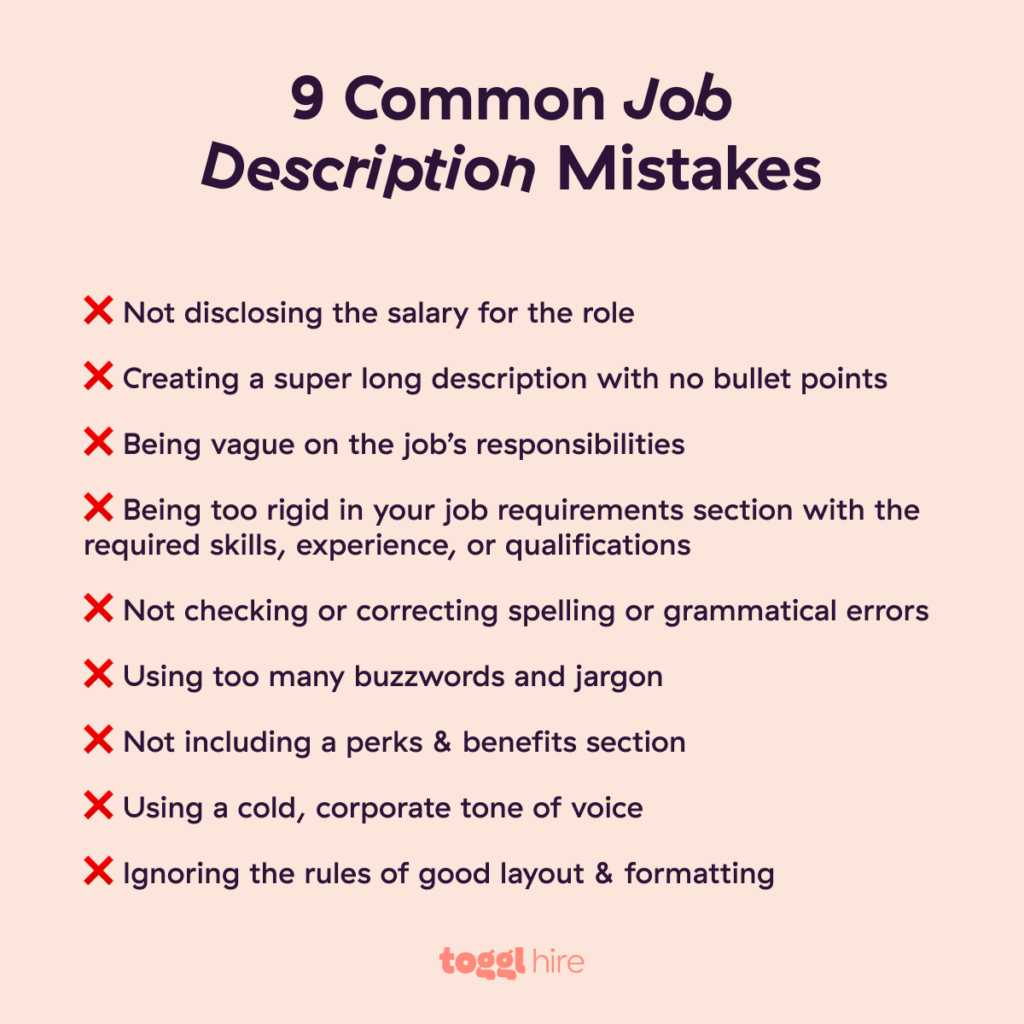
11. Review resumes daily
The average employer only takes six to seven seconds to review one resume. While this is necessary (especially if you have hundreds of potential qualified candidates), it’s also a good way to miss out on key details.
If you have a huge influx of applications coming in or are hiring for various job openings, set aside time every day to review a set number of resumes. However, the ideal solution is to move away from resumes as a hiring tool, as they’re overly complex and time-consuming.
A recruitment software tool like Toggl Hire can help you take a skills-based approach and shortlist 500 candidates in one day, removing the worst ones in the sourcing process, so you can focus on the cream of the crop.
12. Use paid ads to expand your reach
Online job boards are a great way to attract a wide range of candidates and find employees quickly. However, the biggest issue with free job boards is that you receive hundreds (or thousands) of applications from candidates who don’t meet your criteria.
To find truly qualified candidates, you can narrow down your search with paid ads. For example, Facebook lets you create a job ad and target candidates…
✅ In a specific location
✅ With a specific job title
✅ In a specific age range
✅ With specific work experience
Want to hire an accountant in Chicago, aged 30-40, and within driving distance from your office? Facebook (and Instagram — it’s part of Meta) can help with that.
13. Look for top internal talent
If job posting sites aren’t working and creating your own job board posting is too much of a hassle, take one step back and consider…what if you already know your next ideal candidate?
Before creating a new job post, think about opportunities for internal promotions. With tools such as the 9 box grid, you can identify the employees who are the most likely to grow in their roles and become future top performers and leaders.
Here’s what that looks like…
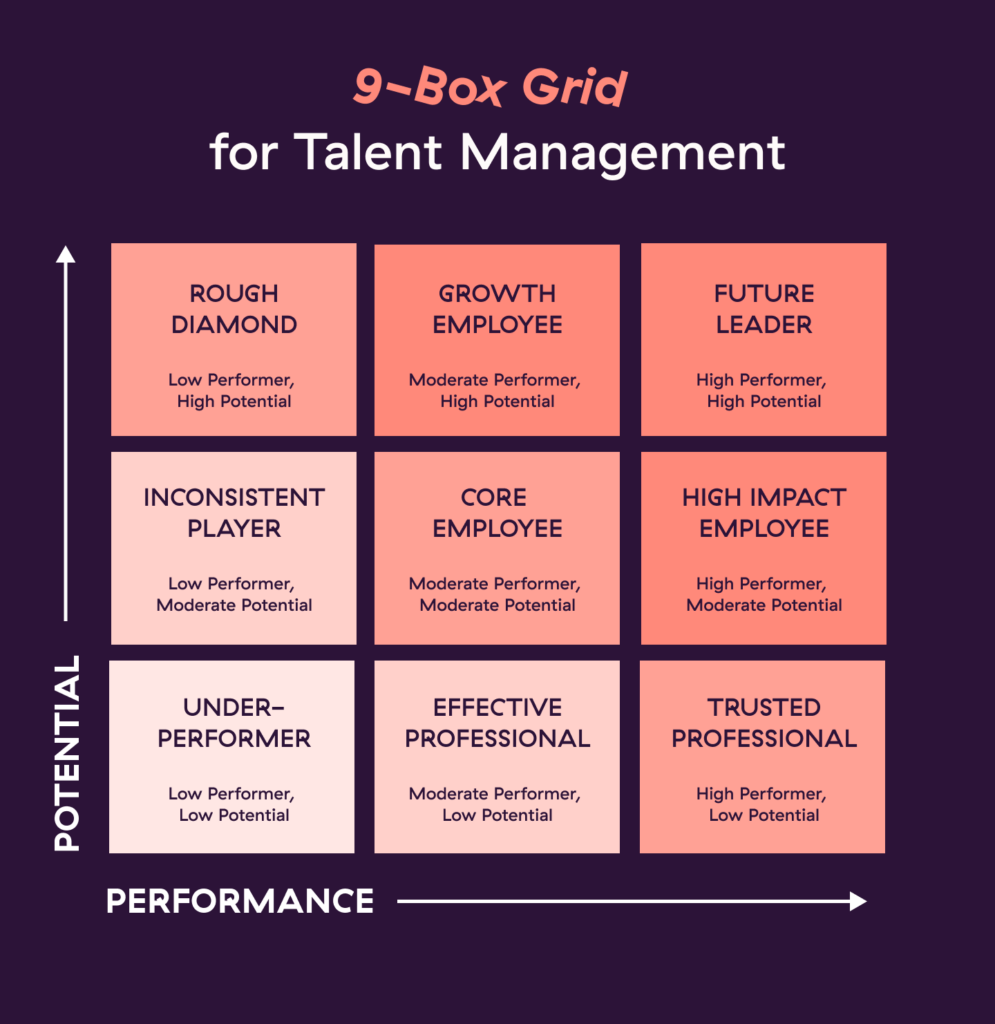
14. Prioritize diversity and inclusion
Having and promoting DEI policies isn’t just great for ticking HR boxes and staying compliant with the law. Companies that stress diversity and inclusion as a part of their company culture are recognized as more welcoming and supportive of different types of candidates.
When you hire with diversity and inclusion in mind, your job posting is likely to attract more candidates and better candidates. Potential employees and top talent naturally gravitate towards workplaces that treat everyone equally and with respect.
15. Focus on skills-based hiring
Many companies fail to hire good employees simply because they hire for all the wrong reasons — like hiring someone because of previous experience at an impressive brand over their actual skills. Or even worse, hiring for highly superficial reasons like a mutual interest or attending the same university.
With skills-based hiring and tools like Toggl Hire, you put job competence at the heart of your recruitment strategy. For example, Toggl Hire lets you create a skills test and use it as the first step of your hiring process. You can immediately go from 100 applicants to 10 that can do the job well.

Why is it so hard to find good employees?
Simply put, most of your employees aren’t that effective. While this isn’t the reality that most employers want to hear, statistics show that the top 5% of your employees are responsible for a total of 26% of your company’s output.
If you’re struggling to find great job candidates, there could be several reasons:
You don’t have a proper hiring process in place to identify top candidates when you see them
You’re searching on the wrong platforms
You offer competitive pay and working conditions, but it’s hard to stand out and find employees online when everyone wants to work for the next Google
You’re not considering passive candidates (most people looking at job listings are people who don’t have a job, and perhaps they were let go, whereas top performers are always employed)
Your best current employees are moving up, and you have to recruit employees for entry-level roles, which can be difficult
It’s worth noting that with the growing global skills gap, it’s also becoming challenging to find potential employees with all the skills needed to perform well in certain jobs or industries. This is especially challenging in tech-related fields or jobs that require skills that are rapidly evolving.
Hire good employees with Toggl Hire
If you’re currently struggling to find employees as quickly as you might want or are having trouble finding decent candidates on any job board, take a step back and think about what you really want from a candidate. It’s probably a mix of things, with one core value: being able to get things done.
The ability to get things done comes down to having the skills for the job. And with Toggl Hire, you can find employees who walk the walk. Our skills tests allow you to hire the right candidates with the right soft and hard skills. No resumes, no assumptions, and no biases — just skills.
Sign up today and start hiring great people for free!
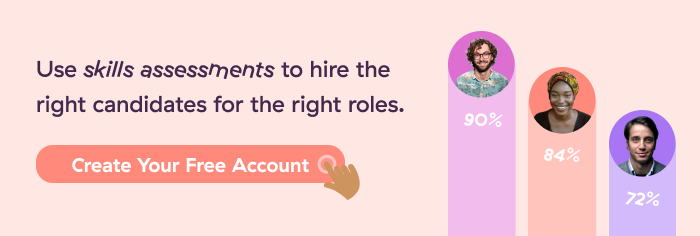
Mile is a B2B content marketer specializing in HR, martech and data analytics. Ask him about thoughts on reducing hiring bias, the role of AI in modern recruitment, or how to immediately spot red flags in a job ad.






